The Red Envelope: Billkin and PP Krit’s Take on a Love Story Beyond the Grave
In a cinematic landscape saturated with remakes, reboots and sequels, you might ...
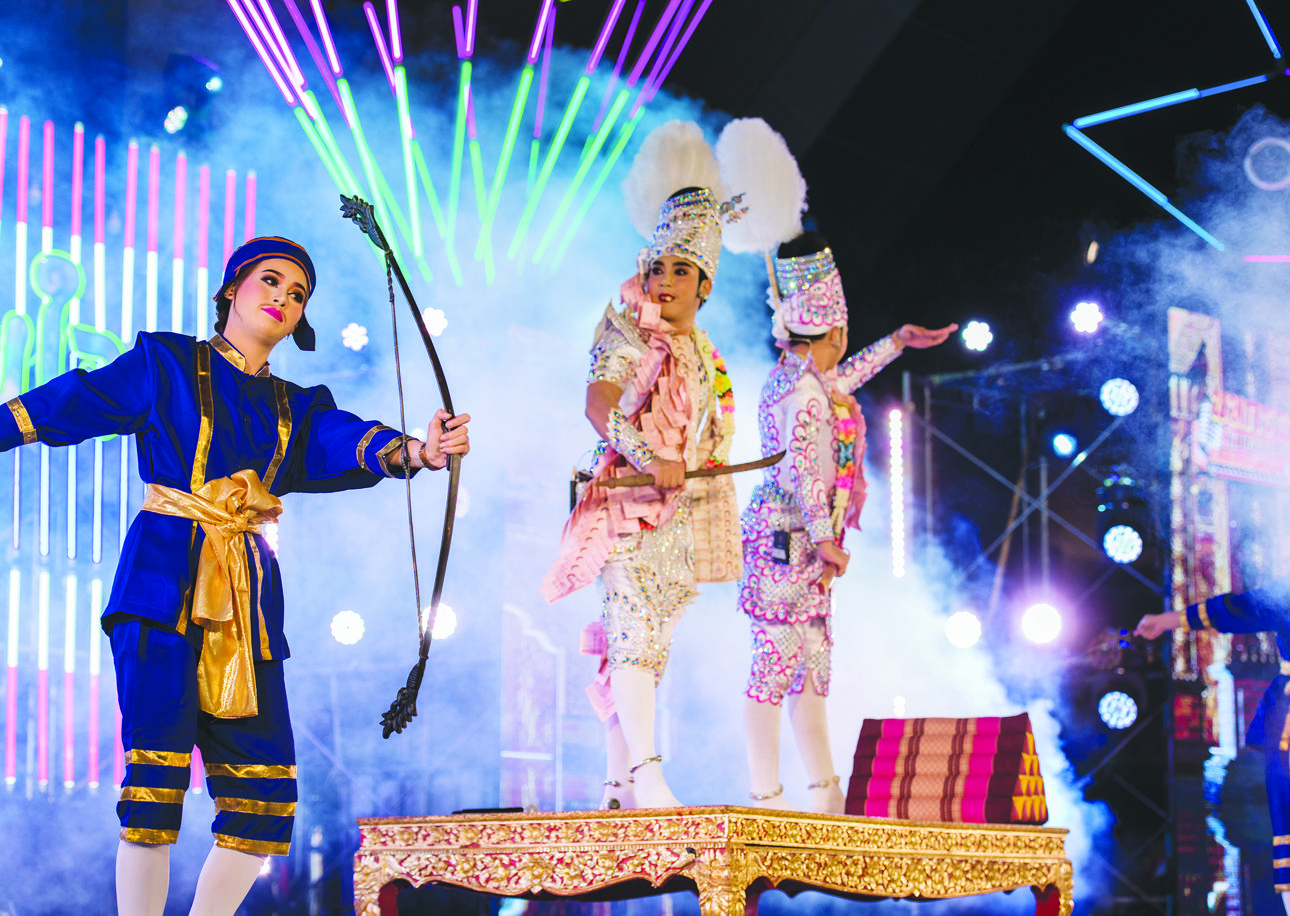
Chareon Krung, often called New Road, was Thailand’s first asphalt thoroughfare. It opened in 1864 and marked a shift in transportation in Bangkok from canal boats to carriages. The area is one of Bangkok’s oldest districts and it still retains some of the ‘old ways’ – you can find Chinese theatre (ngiw in Thai) and many kinds of foods and rituals associated with the seven different ethnic Chinese groups in the capital.
One living tradition that goes back at least 100 years is likay, described by Dr Sukanya Sompiboon in her doctoral thesis, “As a non-court performance, likay is a ‘living theatre’ in a hybrid form presented as Thai folk musical theatre or Thai folk opera.” Likay has been part of my musical life in Thailand since I arrived in the early 1980s.
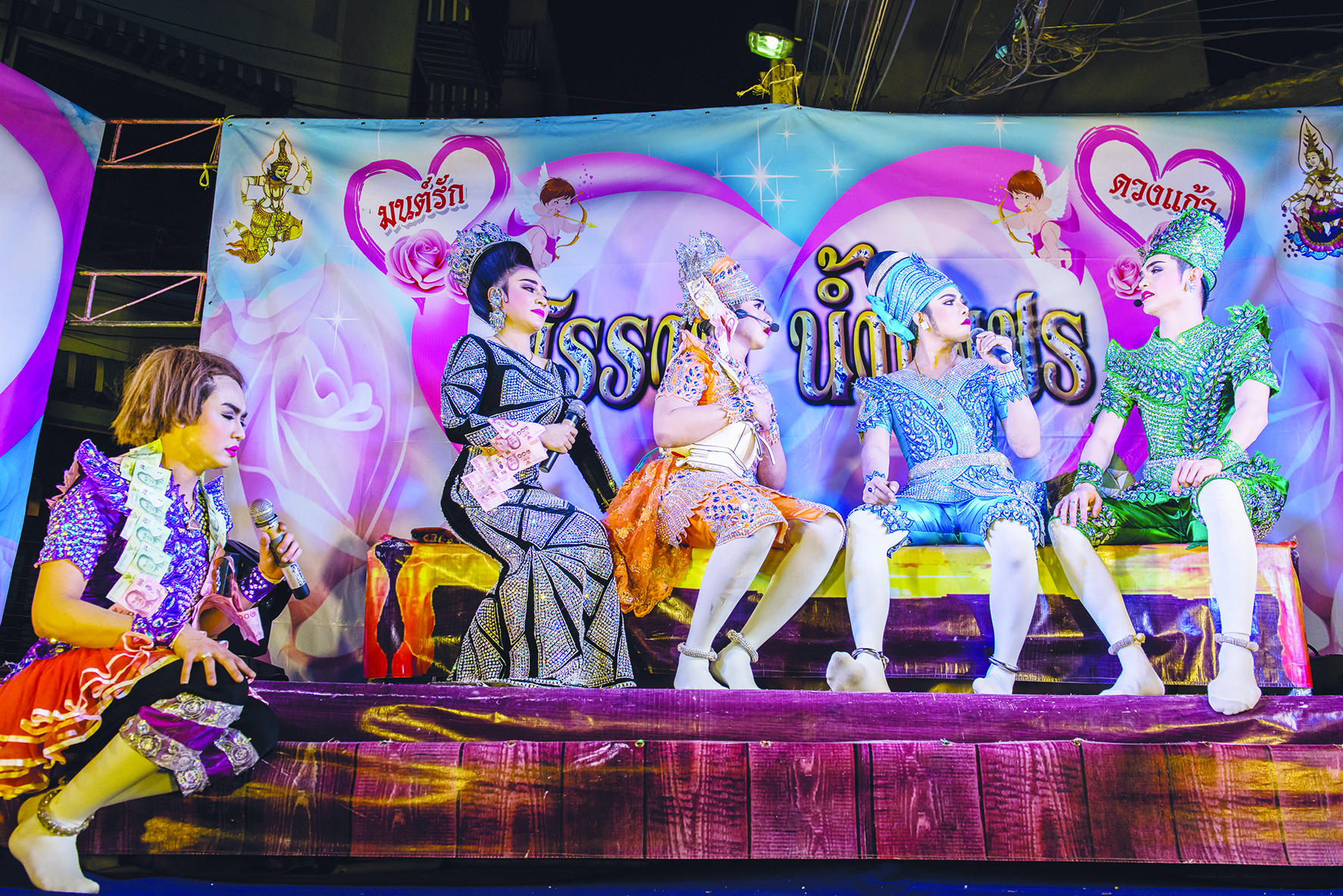
In the main market in Chumpon in the south, I saw likay pah (or sometimes called likay ramana), the southern version of the genre, and the actors humorously incorporated my presence into their dialogue and singing. In the deep South, likay is sometimes also called likay hulu, which is performed in the Malay dialect spoken in the southern-most provinces. A few years ago, I was invited to see Thailand’s top likay troupe, Sornram Nampetch perform for the local community in Chareon Krung Soi 1. Community elders told me that the troupe was hired by community associations to make merit (hiring a troupe as popular as Sornram Nampetch can cost up to 200,000 baht). As dusk fell and people gathered – mainly grandmas, mums, and daughters – I was plied with cold drinks and sugared toast, while backstage the actors changed into costumes, and young performers had a chaperone, or relative, help with the wardrobe. A seamstress was on hand to repair vibrantly coloured outfits and ‘sew’ dancers into their costumes.
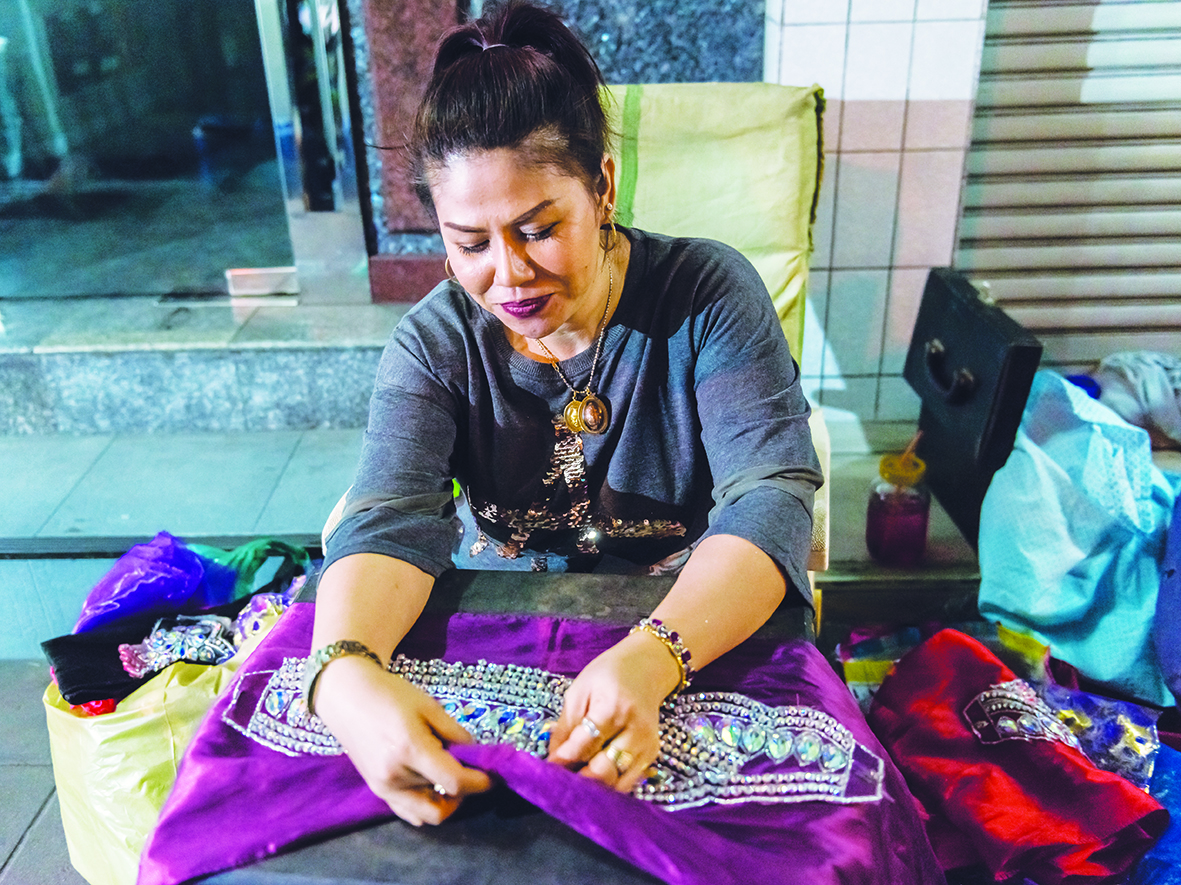
A small, raised stage with a colourful winged backdrop was erected at the tiny intersection of two lanes and old shophouses, and the basic format of a phipat classical ensemble was set up to provide the musical accompaniment to the drama on stage. Once the actors were costumed and ready, the phipat band began to play the opening overture and the male actors moved to the local community shrine to pay respect and perform a ritual dance called ram tawimue. Locals crowded around the dancers, snapping photos and selfies. The entire troupe then took to the stage and the opening chant, known as ok khaek, told everyone that the performance was beginning. This chant, thought to have originated from visiting Persian Muslim traders, is performed by a pseudo ‘Indian’ in a comedic style (Muslim rituals cannot be performed in such a manner). Dr. Sompiboon further noted that the chant was also derived from suat phramalai, which is performed at Thai funerals. She also indicated that the origin of likay is disputed but two major theories contest that the genre arrived during the Ayuthaya period (before the capital of Siam was moved to Bangkok) with Shiite Muslim trade emissaries and Muslim performers from the South who brought dikir music to the Thai courts (this music features chants, handclaps and the ramana frame drum). Out of this mix came likay and the Central Thai folk genre known as lam tad; indeed, the Central Thai folk genres of lam tad, pleng choi and pleng isao, all feature the same musical format as dikir music, most likely adopted during the Ayuthaya period.
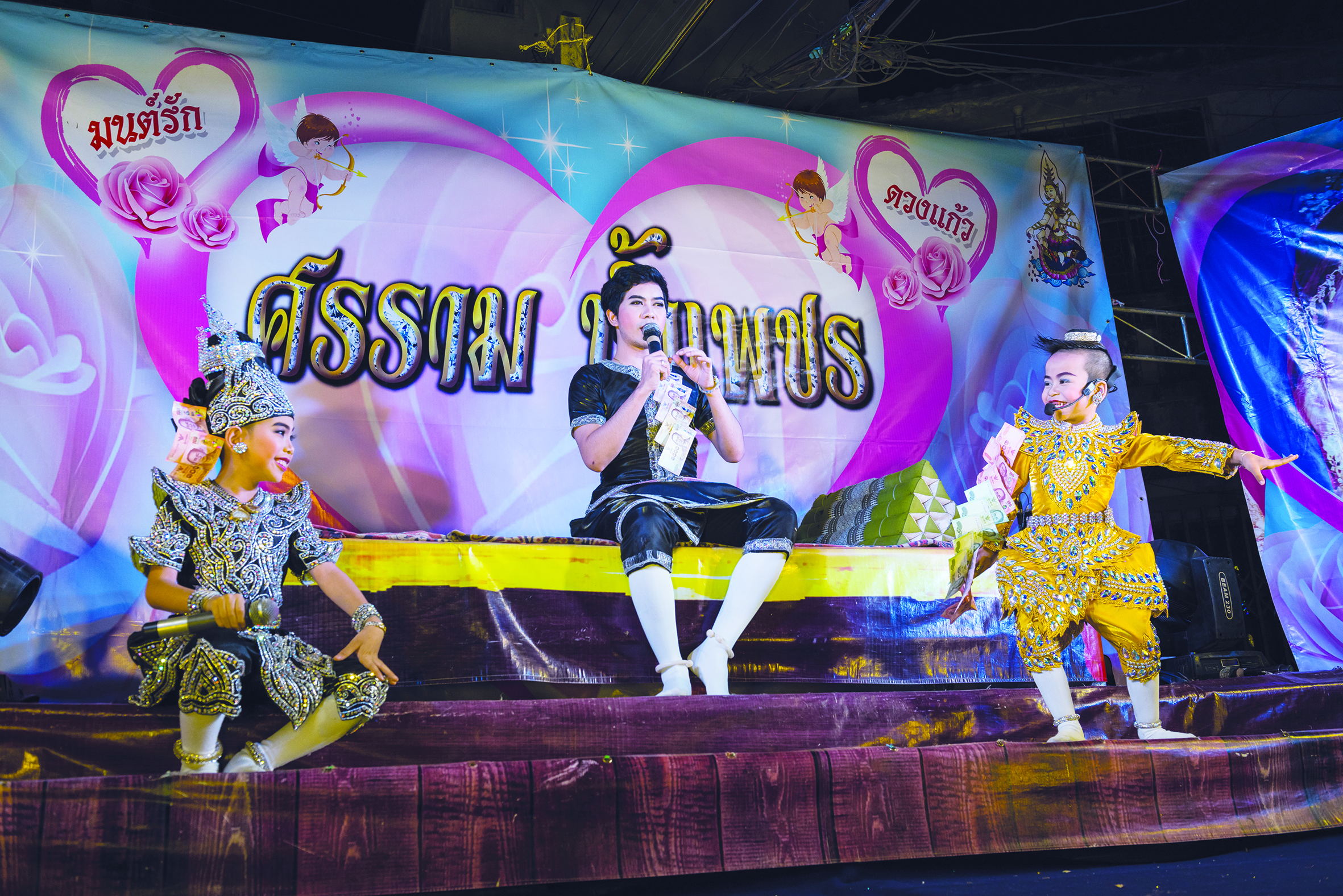
Likay’s narratives and dances come from court dance dramas, known as lakhon in Thai, which blossomed during the reigns of King Mongkut (Rama 4) and King Chulalongkorn (Rama 5). Khon, a masked dance drama, and Lakhon Nai are the most classical of the dance-dramas, but it was lakhon nok, created by commoners for temple fairs from jataka stories of the Buddha, fairy tales and Hindu deities, and, most popular of all, stories of tragic love, that gave them substance. Another aspect of likay influenced by the courts is the diamante- and sequin-encrusted, brightly coloured costumes and plumed headdresses. These had a huge influence on dance drama in the Northeast, which was originally called likay Lao (there is also a form in the Lower Northeast called likay khmer, and over the border in Cambodia it is known as ‘yikay’). Likay Lao morphed into molam mu and is performed by troupes like Pathom Bangtoengsin today.Likay is notoriously difficult to master. Assoc Prof Dr Anukul Rotjanasuksomboon, who is head of the Thai Dance Department at Chulalongkorn University’s Faculty of Fine and Applied Arts and has performed likay for many years, said, “I learned Thai classical dance, including khon but likay is difficult to master because you must be capable of singing, speaking, and performing dances. You must practice hard because there is a lot to learn, and you have to be able to improvise on stage.”
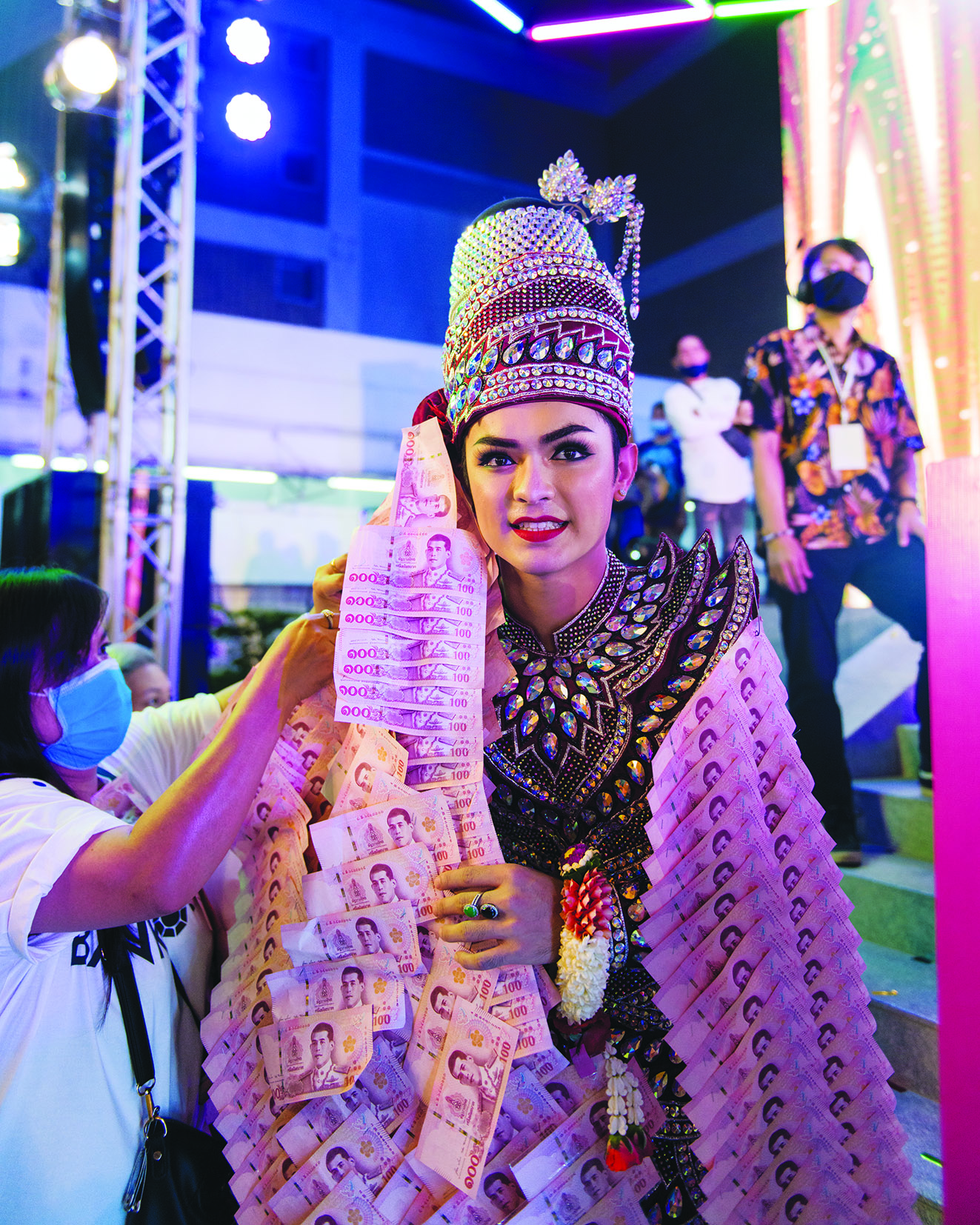
The star of the troupe Sornram ‘Bank’ Aneklap
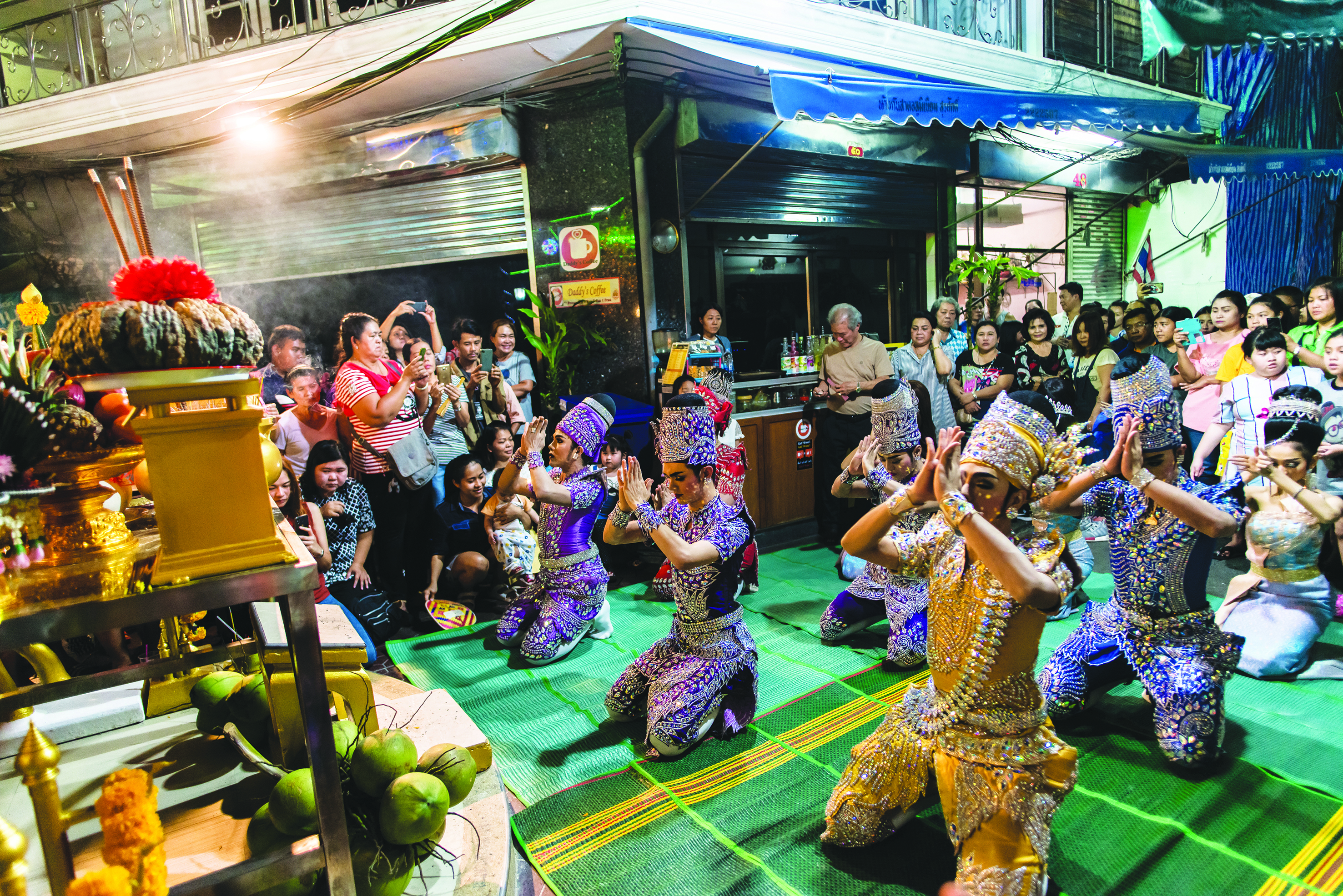
Paying homage -ram tawimue ritual performance
National Artist Chaichanat Boonachote, once showed me how difficult it was to sing in the likay style, which is quite high-pitched and nasal, and needs the typical Thai vocal tremolo and vibrato (euan and luk khor). All the old stars of central pleng luk thung (country) music like National artists Kwanjit Sriprajan, the late Waipot Petchsupan and Chai Muang Singh (in likay circles his stage name was Ling Daeng or ‘red monkey’) can sing in likay style, something which the newer generations of country singers have yet to master. Many of Sornram Nampetch’s actors, including the star, Sornram ‘Bank’ Nampetch, were born into the business and have been performing since they were kids – in fact, the troupe has two young stars, the youngest, at just seven, has a powerful voice that echoed around Chareon Krung’s tiny lanes. When I asked the manager how the youngster developed his amazing pipes, he just laughed and said, “They’re born into it.”
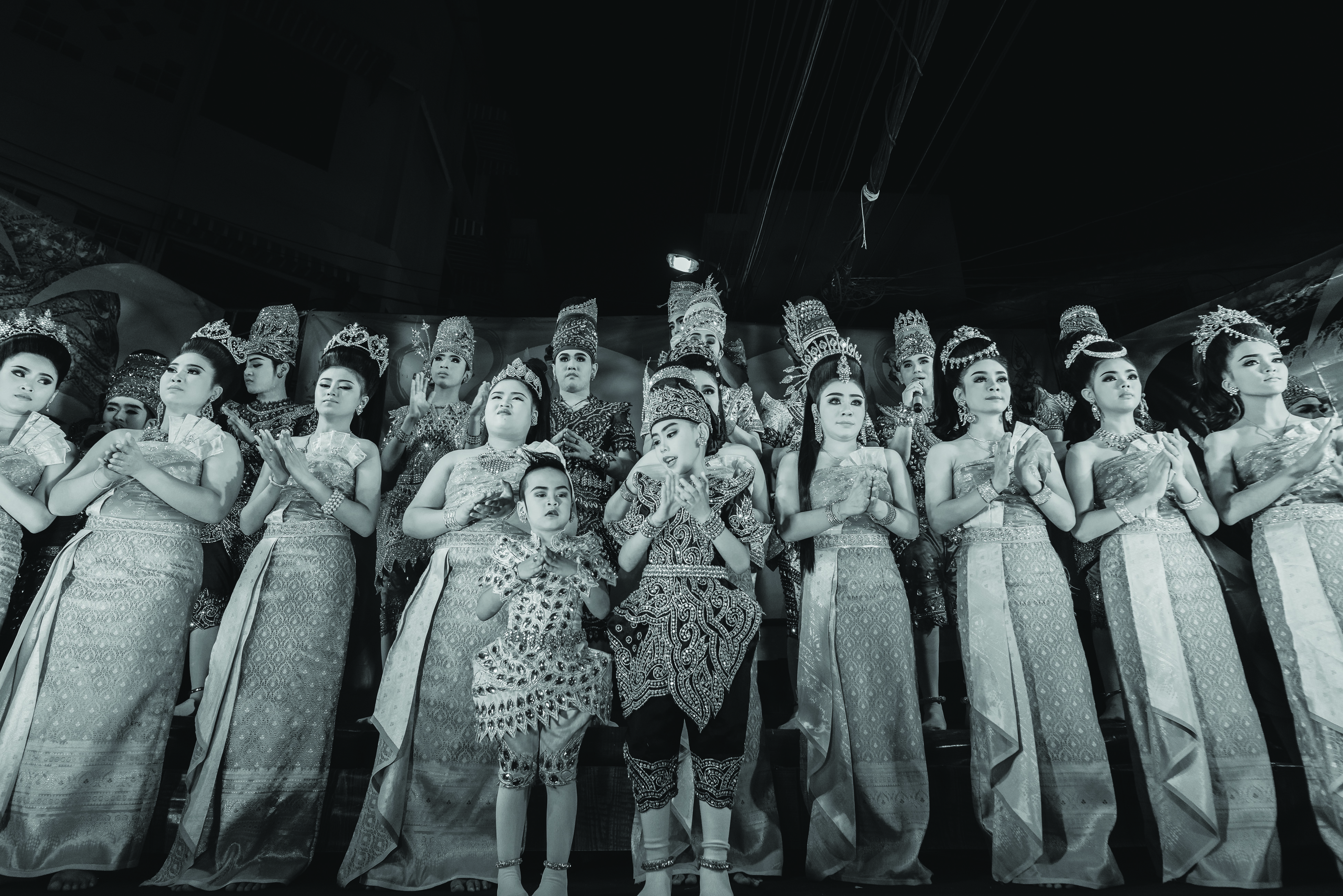
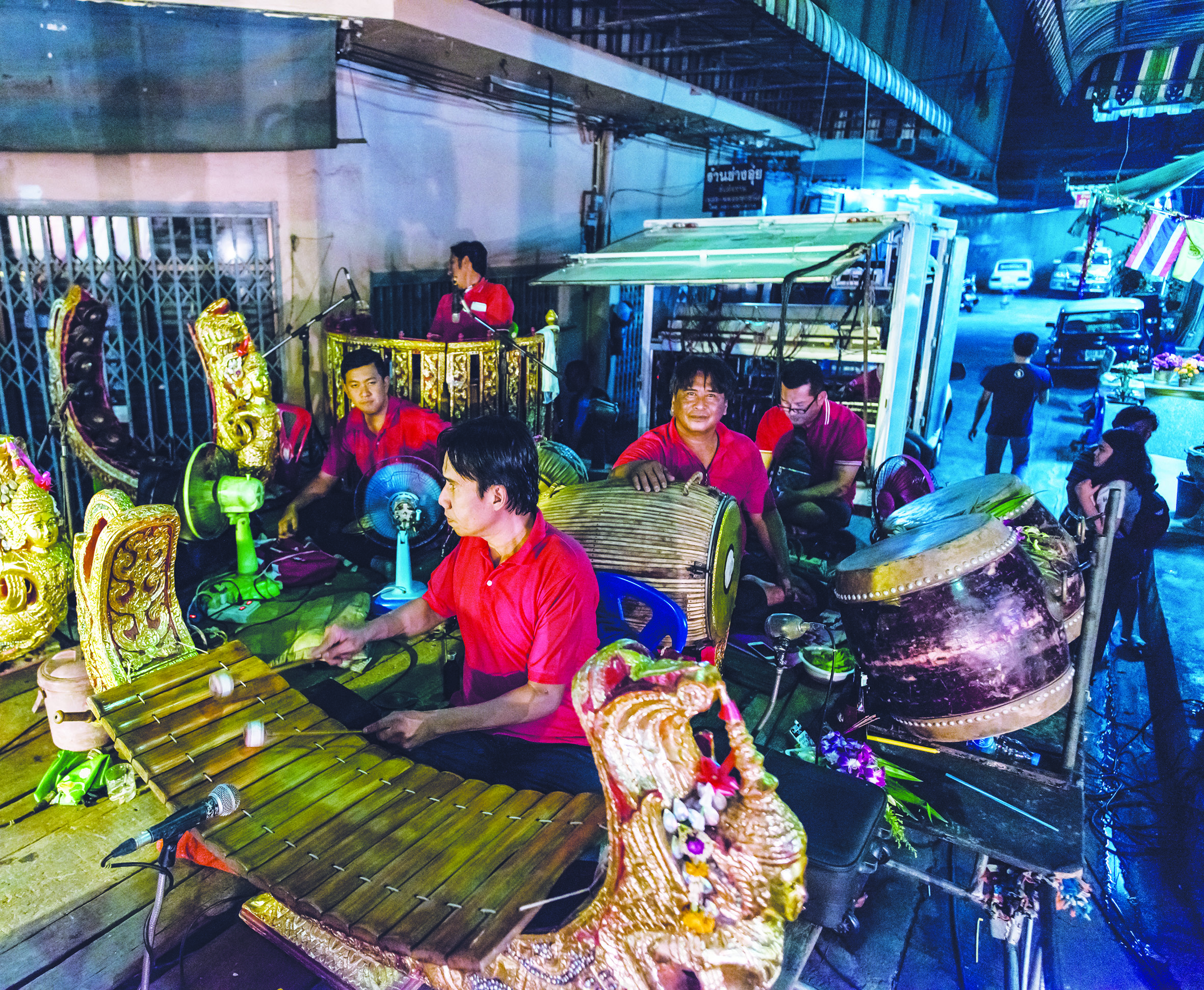
Likay’s golden era, from the late 19th century to the beginning of WWII, produced much of the content that is used in performances, as with molam music from the northeast, one of the reasons likay has survived is the ability to move with the times, to incorporate contemporary events and stories into the drama. These days, likay is more like a pleng luk thung concert, and like molam mu, the drama is punctuated by popular songs. Some likay superstars like Chaiya Mitchai have become huge luk thung stars as well; his sister, Ann, has even taken her singing and dancing skills to India’s Bollywood appearing in movies and music videos there. When I asked about likay back in the 1980s, some of my Thai friends would say that it was on its last legs, destined for obscurity. In 1989, Suthon Sukphisit wrote in The Bangkok Post that a likay troupe could be hired for 300 baht and its popularity was declining, as it could only offer likay performers, “a life of unending struggle, of hope forlorn.” But is it really dying or is it just adapting to the times? Despite there no longer being a dedicated likay theatre in the capital, if you go to temple fairs and social events you’ll be able to catch some likay performances (especially on the Thonburi side of Bangkok, where many troupes are located.) Colleges in both Bangkok and in the provinces now teach likay techniques and I have attended several folk music and dance drama workshops by Kwanjit Sriprajan and her daughter, Somying. Various writers have updated scripts to include contemporary events and taken the form overseas to international audiences.
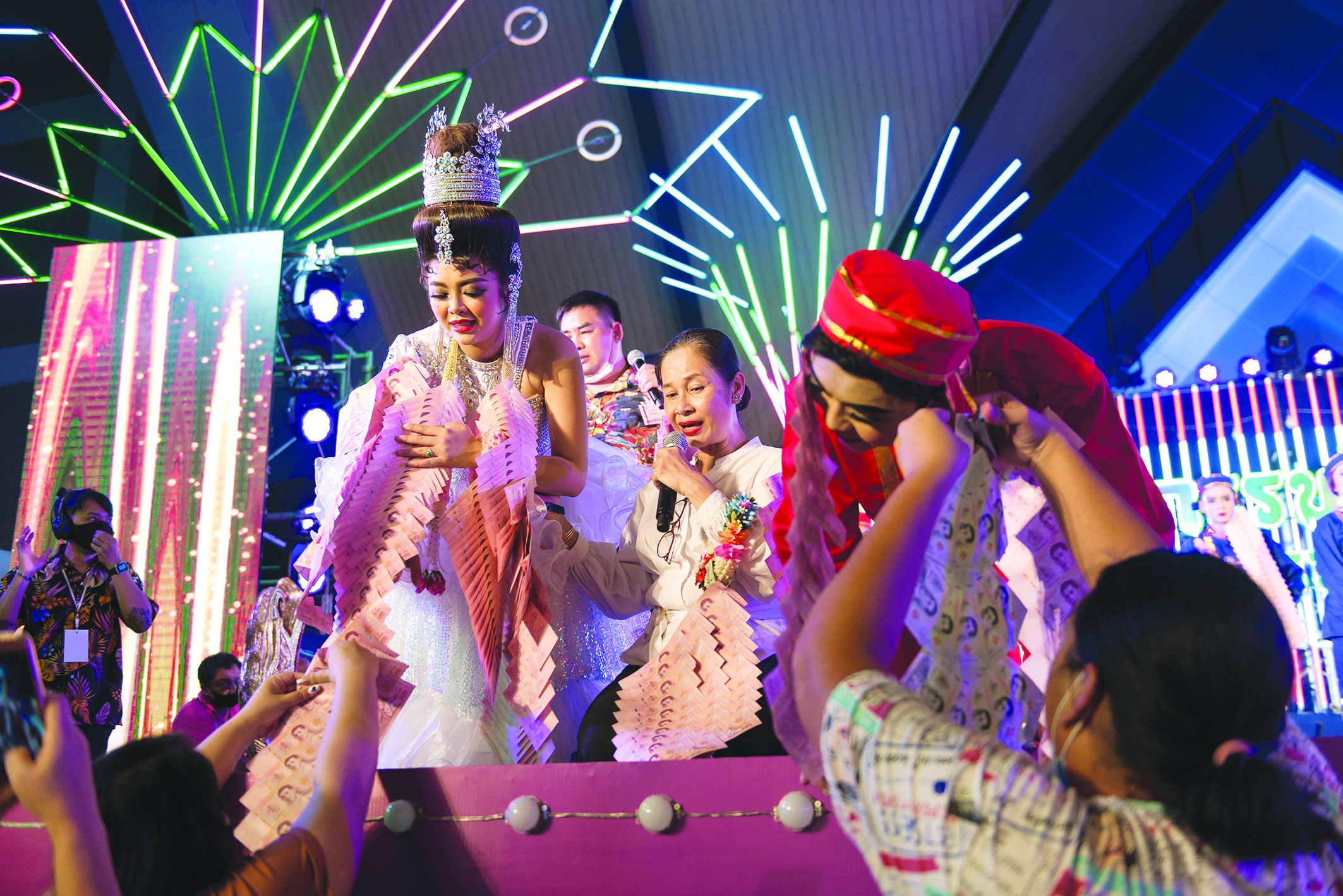
Receiving gifts and money from fans
Dr Anukul Rotjanasuksomboon, is currently leading a research project in collaboration with the Faculty of Pharmacy at Chulalongkorn University. “We are researching and developing a script on how to present an ‘edutainment’ likay performance to communicate with the public about the issue of hypertension.”Of course, any educational likay project will have to reflect the interests of the audience, to be fun with a fast-paced racy narrative, include lots of sword fighting and lost (and then found) love, dancing and great singing. I told Sornram Nampetch’s manager, Mr Preecha, that the performance was so much fun, and that clearly everybody had enjoyed themselves. “This performance is really ‘local’,” he said, “likay has been like this for 100 years.” Hopefully it will last for at least another 100 years.
In a cinematic landscape saturated with remakes, reboots and sequels, you might ...
These top 5 barber shops in Bangkok are where gentlemen can elevate ...
Must-have gadgets for kids in the Y2K are, predictably, making a comeback ...
While traditional TV shows are serving us endless boy-meets-girl tales. Thailand has ...
Stay ahead of the curve with these three must-visit new restaurants in ...
See how Kim Steppé’s early passions, family values and entrepreneurial spirit continue ...
Wee use cookies to deliver your best experience on our website. By using our website, you consent to our cookies in accordance with our cookies policy and privacy policy